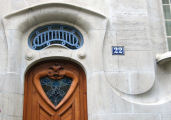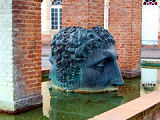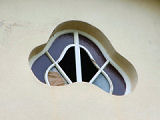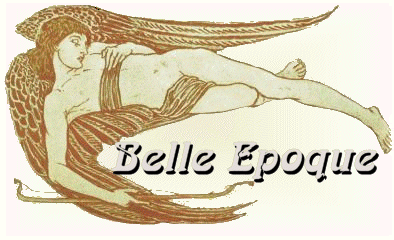The Belle Epoque in Europe
France
Strasbourg
Art Nouveau and Jugendstil unite
Architecture in detail: Architecture et histoire des bâtiments et lieux (to some extent also in English)

When Charlemagne's son died, the Frankish Empire was splitted into three parts, one for each grand-child, and with the Oaths of Strasbourg in 842 began a history where Strasbourg, for many centuries, found itself stuck between the two empires on its left and right side. For a short period, the Alsace was part of the middle empire and Lotharingia, but by the Treaty of Meersen (870) it became part of East Francia, besides a period between 913 and 925 when it belonged to West Francia. East Francia developed and became the Holy Roman Empire to which Strasbourg belonged as a Free Imperial City.

After the Thirty Years' War, by the Peace of Westphalia, most parts of the Alsace were won by France. Missing parts were conquered by Louis XIV within the following years, at last Strasbourg in 1681. For the next nearly 200 years, it remained French, until in 1871, after the Franco-Prussian War, Alsace and northern Lorraine were annexed to the newly founded German Empire. Until the end of the First World War, Strasbourg belonged to Germany before, in 1918, it returned eventually to France. It should nonetheless be mentioned that many, probably most of the Alsatians consider themselves being neither French nor German but Alsatian people with their own history, own culture, own language.

The famous artist Tomi Ungerer illustrated the situation of his native town
as well as of the whole Alsace by the monument called Janus Aqueduct which he created in 1988
on the occasion of the 2000th birthday of Strasbourg. The double-headed god symbolizes the positive
influence of two cultures but also the negative influence of two desires for power.
This short historical abstract shows that Strasbourg, during the whole period of the Belle Epoque,
was part of the German Empire. Apart from the unpleasant fact that Germany tried to make of Strasbourg
one of the most important fortifications against France, new administrative and cultural
buildings were built as well as entire residential areas. Many architects coming from Germany into the new
"Reichsland (imperial land) Elsass-Lothringen" imported the Jugendstil, but the influence
of Guimard in Paris, Horta in Brussels as well as of Nancy joined it to the French Art Nouveau.

On the occasion of the exposition Strasbourg around 1900 in Stuttgart 2012, the curator Jörg Kleinbeck wrote: "More than 120 buildings of around 1900 with typical elements of Jugendstil still exist in Strasbourg. Nearly every type of building can be found: Simple dwelling houses, upper-class apartment and commercial buildings, public baths and schools, private business enterprises, but also glamorous mansions, ample bridge constructions and stylish department stores of that age. In most cases, it followed the principle of homogenous composition comprising all parts of a building such as the face with its balconies and windows, the staircases and entrance halls as well as the gardens. By using materials of high quality such as glass, wood, freestone, clinker, metal and glazed tiles, an individual solution for each building was searched and found. On all levels, the lust of composition, the joy of using the materials can be seen and provides the attraction of the buildings surprising those standing before them until today by their wealth of forms."
